The life and times of a hole in the ground on Sacramento’s Capitol Mall
CalPERS announced last week that it had sold a long-vacant lot to the Shingle Springs Band of Miwok Indians, opening a new chapter in the life of a property where investors have thus far only managed to develop dashed dreams.
The property has gone through many iterations. Here is a timeline of this prime corner of downtown Sacramento:
1851: An unratified treaty with the U.S.
As of this month, the lot is now in the hands of its original stewards, Miwok and Southern Maidu people, who have lived in the Sacramento Valley for generations. Back in 1851 and 1852, haphazardly selected representatives from multiple sovereign tribal authorities in California signed treaties with the U.S. In exchange for a considerable amount of land reserved for their own use, as well as various forms of payment and ongoing “terms of peace and friendship,” the Native representatives agreed in writing to cede much of their land to the federal government.
The treaties stipulated that the reservations were “hereby and shall be forever set apart and held for the occupancy of said tribes of Indians.”
However, the 18 pacts with Native nations in California were never ratified by the federal government. As the Gold Rush continued to drive up the price of land, U.S. senators met in 1852 to consider the treaties. They rejected the agreements — and placed them under an injunction of secrecy.
Although the federal government did not honor the terms of the original agreements, settlers claimed title to the land, including the parcel that is now a vacant lot downtown.
Dec. 8, 1968: Sacramento Union opens its new office at 301 Capitol Mall
The Sacramento Bee reported that the new building had its dedication several years after its purchase by Copley Press, the owners of what would become the San Diego Union-Tribune. The Sacramento Union was there for a quarter century.
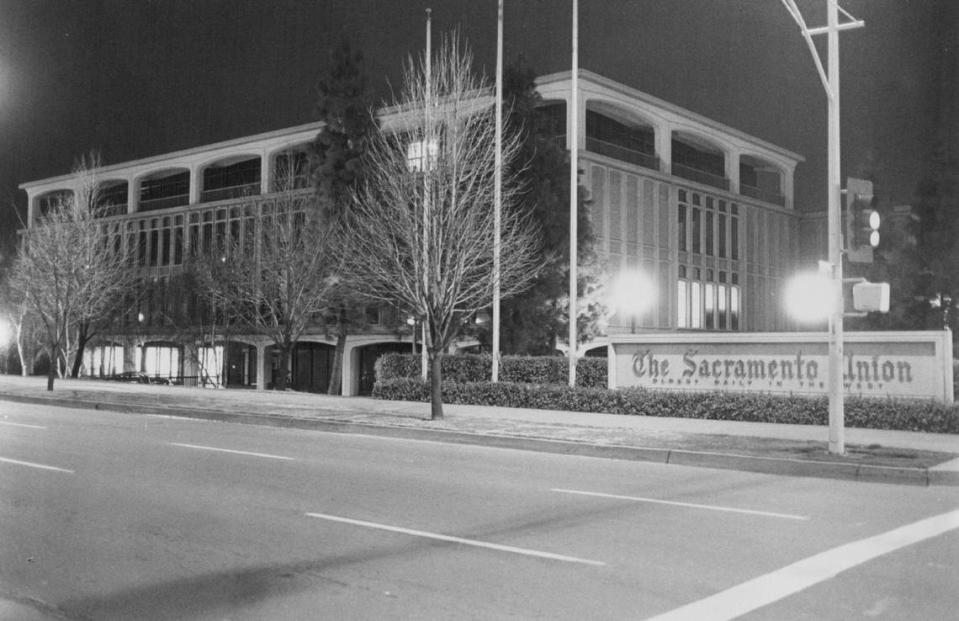
January 1994: The Sacramento Union folds
After the Union announced plans to shutter, The Bee’s Gary Delsohn wrote on Jan. 13, 1994, “This was a newspaper, after all, whose golden age was arguably 130 years ago, when a largely unknown and unkempt writer named Mark Twain persuaded editors to send him to Hawaii for articles at $100 a column.”
One of the last owners of the Union, local developer Danny Benvenuti, led a group of investors who bought the paper in 1989 with an ill-fated plan. As The Bee reported in 1994, “He said he had hoped to make enough of a profit by building a high-rise at the paper’s headquarters on Capitol Mall to continue publishing the paper.”
Benvenuti and his partners sold the newspaper but kept the land and the building, and said again that year that they planned to build a skyscraper.
Yes, this means the lot has seen scuttled high-rises spanning three decades.
April 27, 1997: Owner abandons his high-rise plan
The Bee reported that Benvenuti had already lost a bid to build a new headquarters for the state attorney general at 301 Capitol Mall. By 1997, the newspaper said, “The private market for high-rise office space is slow and the state seems intent on building elsewhere.” Benvenuti said he would continue leasing the old Sacramento Union building. “That’s all we’re doing with it,” he said.
2004: New developer plans to build two high-rise towers
Sacramento developer John Saca partnered with CalPERS and bought the site. He planned to build a $500 million hotel and condominium project with two 53-story towers. This, of course, did not pan out.
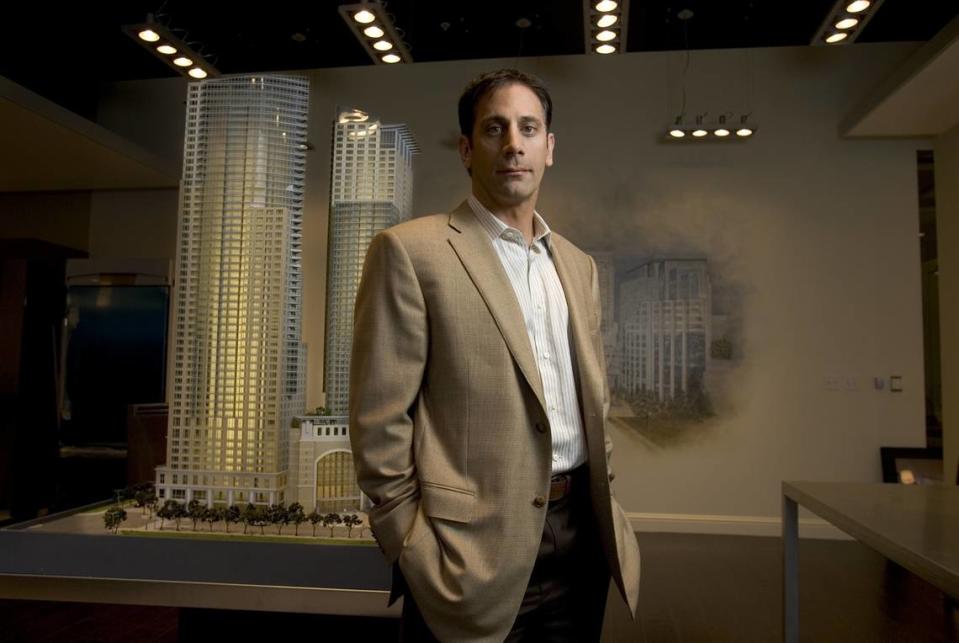
December 2005: Crows disappear as the Sacramento Union plant is torn down
The Bee speculated in December that “noise from the demolition of the old Sacramento Union Building ... has unnerved the birds.”
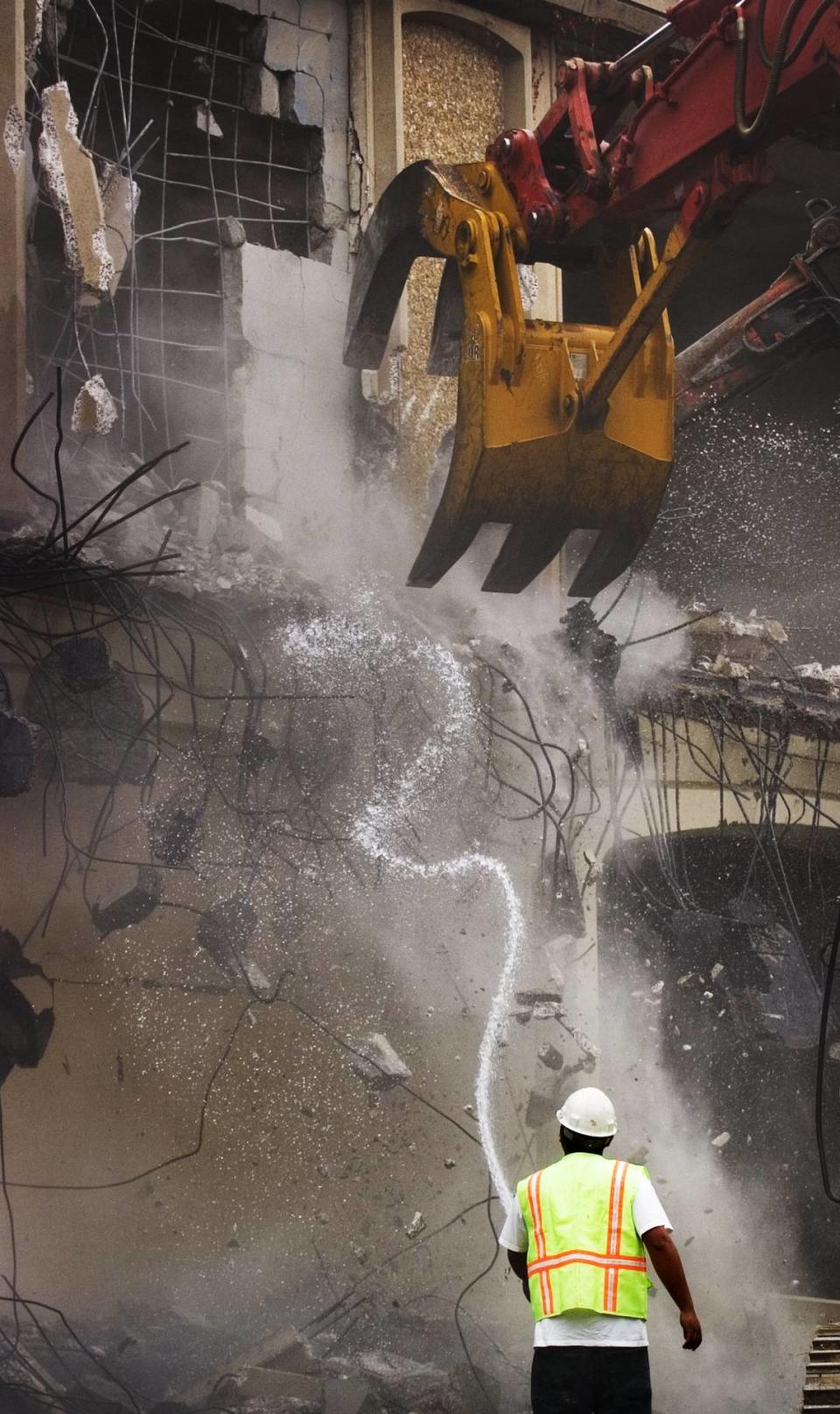
January 2007: Construction halts on 53-story hotel and condominium project
In September 2006, the city of Sacramento had approved an $11 million subsidy for the hotel portion after Saca complained that the $500 million in initial costs had ballooned by $100 million.
The city manager at the time said, “We’re not interested in having a hole at the gateway to the Capitol Mall.” But of course, the best-laid plans of Sacramentans often go awry.
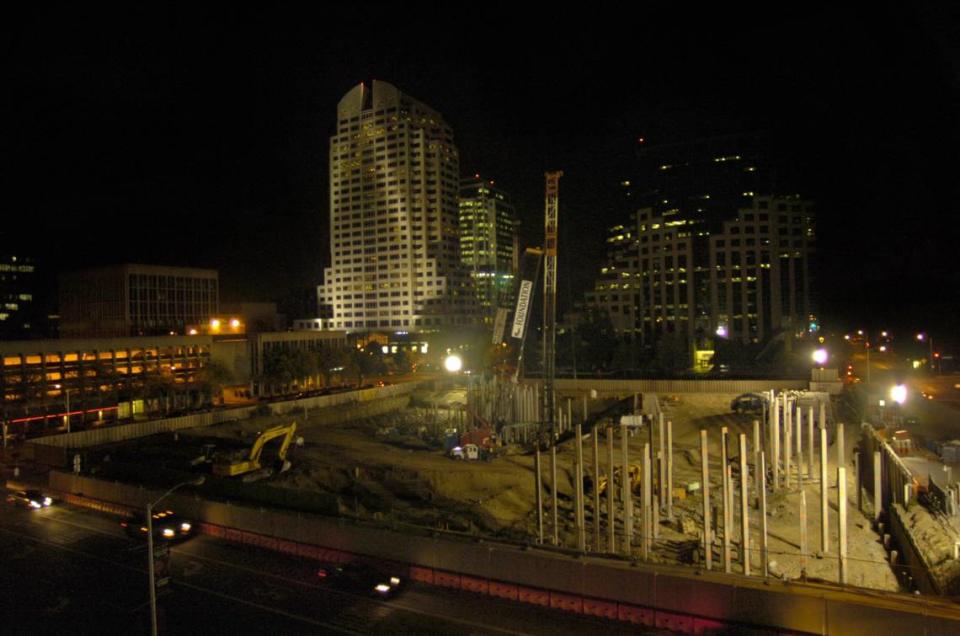
Bee reporters Mary Lynne Vellinga and Jon Ortiz wrote that Saca had collected down payments on 383 condo units as of November. Still, by mid-January 2007, they reported that “several contractors filed liens against (Saca) in the past week for unpaid bills totaling $7.3 million.” Construction, they said, had halted.
While his spokesman told The Bee that this was “a short temporary regroup” and that “we’re all confident that this project remains on everybody’s hot list,” the towers were, instead, swiftly entered onto the cold list.
October 2014: CalPERS to take its time with development
Bee reporter Dale Kasler wrote in October 2014 that Ted Eliopoulos, then the chief investment officer at CalPERS, told him, “We plan to be very smart before jumping back into construction.” Kasler wrote that the agency “now says it will take its time before proceeding at the downtown site.”
This assertion, now 10 years old, would be much more accurate than many might have expected.
Feb. 3, 2016: Plans for a 30-story tower
The Bee reported in February 2016 that “CIM Group unveiled conceptual drawings of a single 420-foot building that could revive the drab western end of Capitol Mall.” The tower would have been the second-tallest in the city, and the initial plans included a mix of offices, retail space and 100 residential apartments.
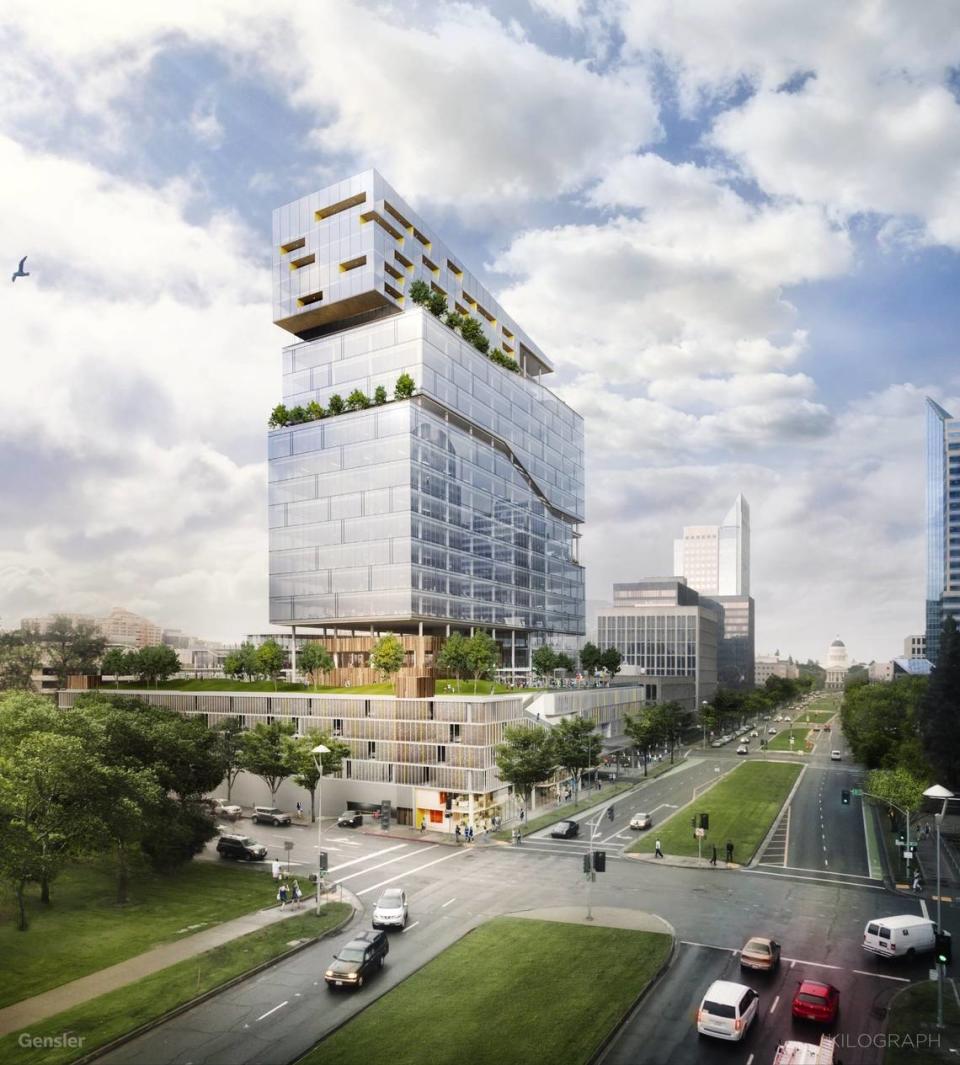
Kasler wrote, “If the developers break ground on schedule in early 2018, the parcel will have sat idle for 11 years since CalPERS pulled the plug on developer John Saca amid cost overruns and a faltering economy.”
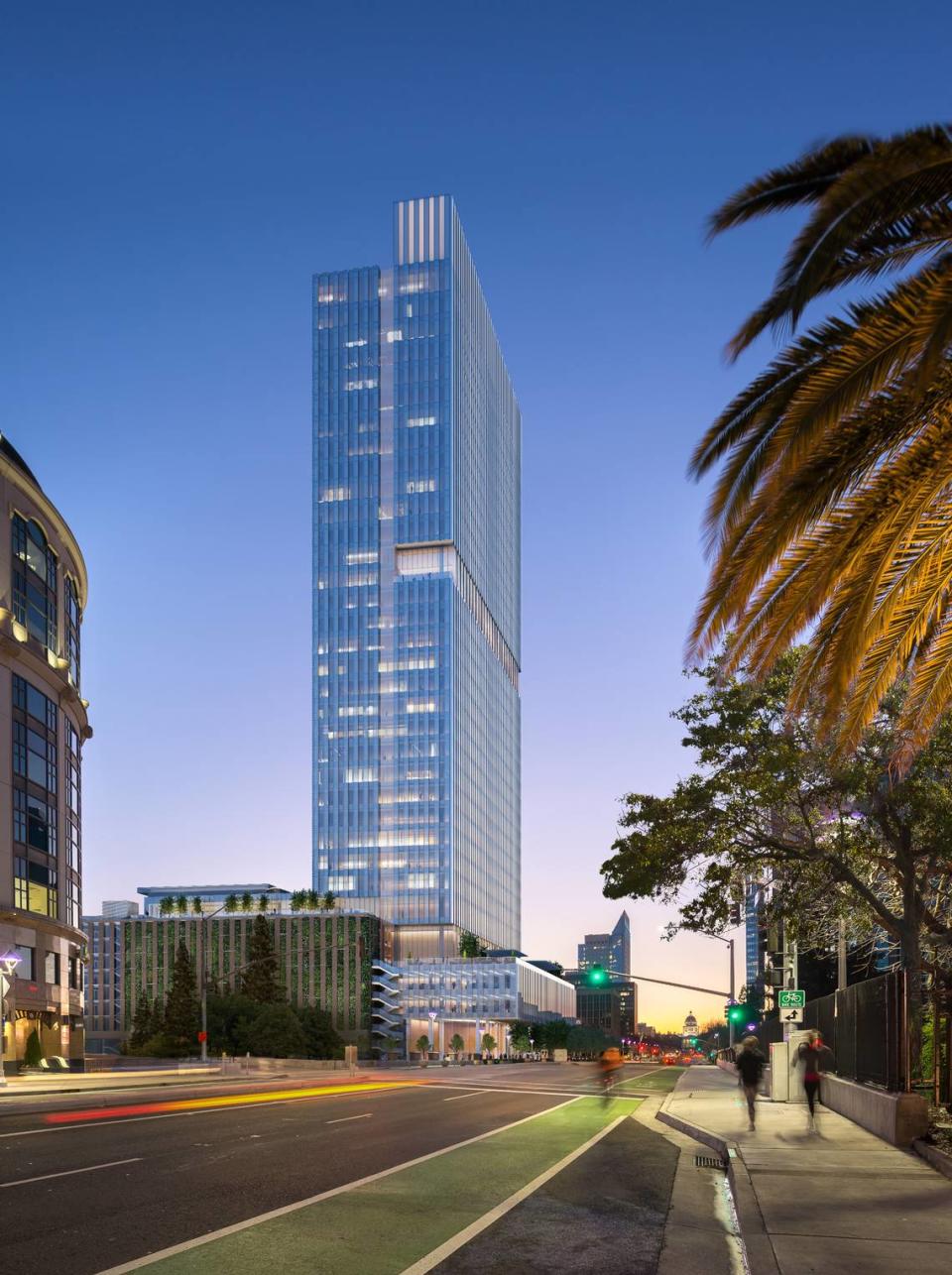
The chief investment officer of CalPERS said at the time, “We’ve been patient. The economic conditions in Sacramento are improving. ... There’s a window opening.”
Then-councilman Steve Hansen — who lost his council seat to Katie Valenzuela in the 2020 election and lost the mayoral primary this year — represented downtown at the time. “This is a beautiful project,” he said. “This is a realistic project we can get built.”
Like many last words about the lot, Hansen’s could be called famous.
April 2, 2024: Miwok Indians buy back the land
In a full-circle moment, the Shingle Springs Band of Miwok Indians announced they bought this vacant lot downtown from CalPERS for $17 million. The tribal chairwoman, Chairwoman Regina Cuellar, said in a written statement, “The land is part of the foundation of our existence. ... It is where our ancestors lived and flourished.”
The tribe has not yet announced plans for the property — perhaps a high-rise?

